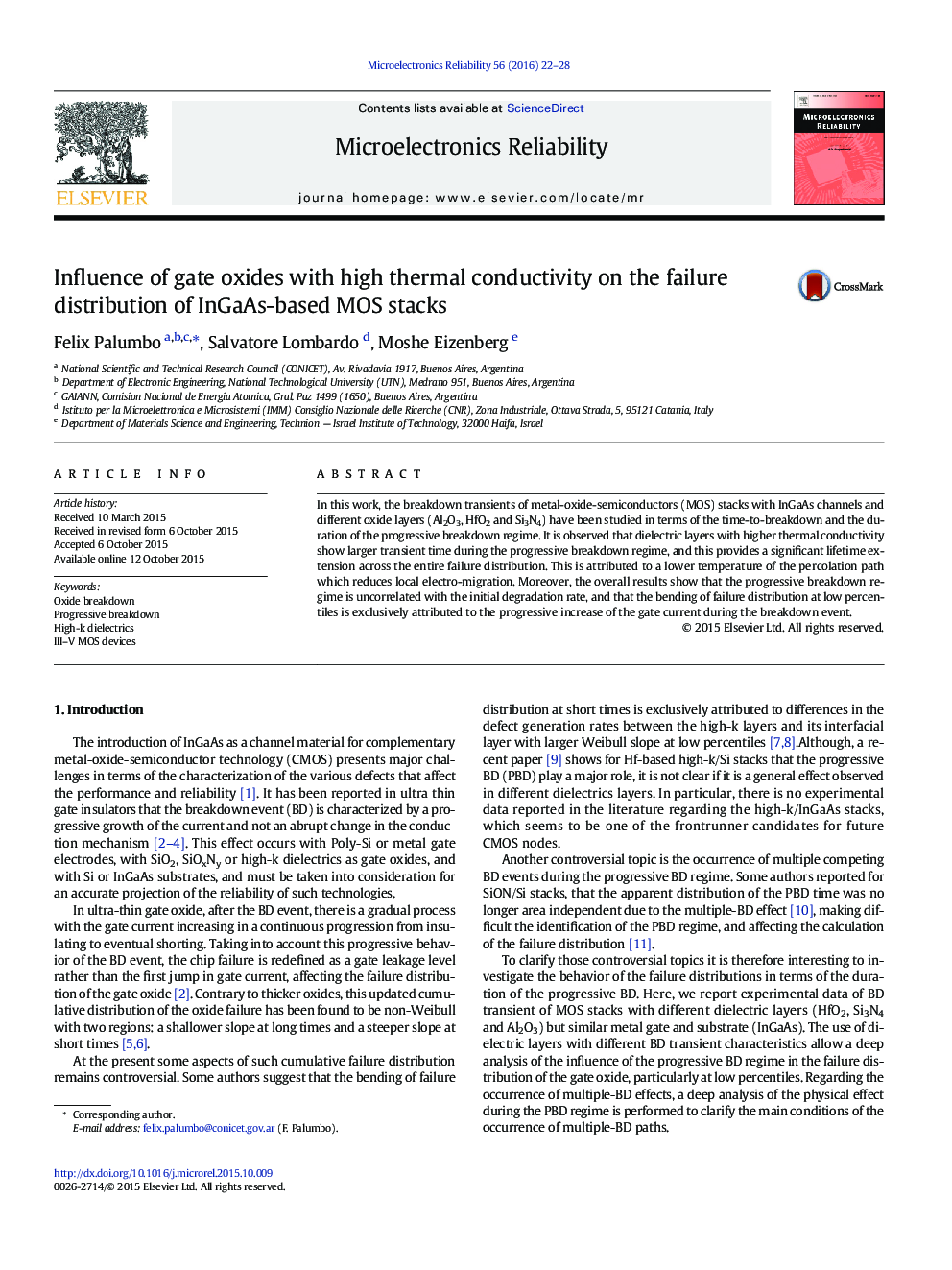| Article ID | Journal | Published Year | Pages | File Type |
|---|---|---|---|---|
| 548108 | Microelectronics Reliability | 2016 | 7 Pages |
•The progressive breakdown regime is uncorrelated with the initial degradation rate.•The bending of failure distribution at low percentiles is exclusively attributed to the progressive BD.•The progressive BD is driven by thermal conductivity of the oxide layer.•The Al2O3 shows superior characteristics due to its longer progressive BD regime.
In this work, the breakdown transients of metal-oxide-semiconductors (MOS) stacks with InGaAs channels and different oxide layers (Al2O3, HfO2 and Si3N4) have been studied in terms of the time-to-breakdown and the duration of the progressive breakdown regime. It is observed that dielectric layers with higher thermal conductivity show larger transient time during the progressive breakdown regime, and this provides a significant lifetime extension across the entire failure distribution. This is attributed to a lower temperature of the percolation path which reduces local electro-migration. Moreover, the overall results show that the progressive breakdown regime is uncorrelated with the initial degradation rate, and that the bending of failure distribution at low percentiles is exclusively attributed to the progressive increase of the gate current during the breakdown event.
Graphical abstractFigure optionsDownload full-size imageDownload as PowerPoint slide
